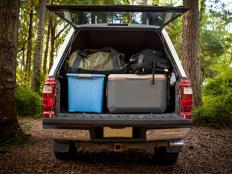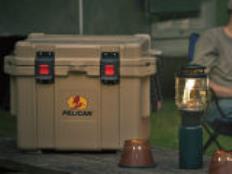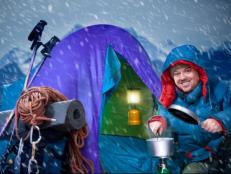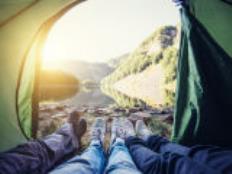Engine Block Heater
If you camp in extremely cold regions, it's best to have an engine block heater installed. Turn on the block heater at least three hours before you start your engine.
Other Considerations
Slide Outs
Ice and snow can accumulate on slide out awnings, preventing the awnings from rolling up properly when it's time to go. Clean the snow, ice and frost off the awning.
In addition, ice and snow can accumulate on slide gaskets and prevent the slide from retracting. Spraying RV antifreeze on the gaskets may help. And retracting the slide the night before you leave can save a lot of grief on a cold winter morning.
Emergency Items
When winter RV camping, the best planning includes preparing for the worst. Always have the following with you:
- Tire chains
- Weather band radio
- Extra blankets
- Extra warm clothing
- Sleeping bags rated for zero degree temperatures
- 5 gallons of drinking water in heated storage space
- A "white gas" camping stove (does not require propane)
- Gasoline-powered generator
- Extra propane tanks
- Blow dryer to defrost pipes and tanks
- Emergency GPS system
- Extra food
- Solar charging panels are good for re-charging house batteries
- Cash for unexpected fees or emergencies
Check the Weather Before You Go
In some parts of the country, winter storms can appear suddenly and are unforgiving. Be safe by checking with the National Weather Service to see what the forecast is for the areas you'll be in.
Make Sure Campgrounds Are Open
Due to their elevation, some campgrounds close as early as mid-September to early October; so double check to see if your favorite spot is open. You don't want to be disappointed by a "Closed" sign.
Finally
At first glance, winter RV camping can seem like a huge amount of work. But the good new is that many of the add-ons only need to be installed once. After that, they can be left in place.
 Book your next camping trip
Book your next camping trip
- 3
- of
- 3








Discuss This Article